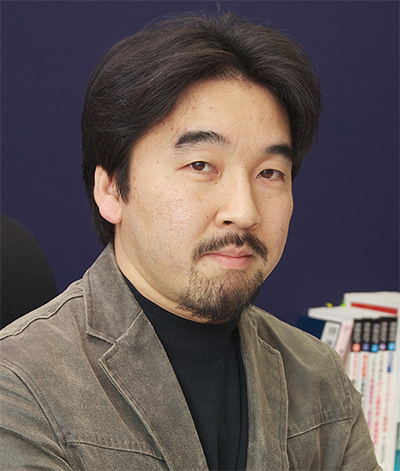
Research Activities
Research Activities
Principal Investigators
Dept. of Life Science Frontiers
Masato Nakagawa (Junior Associate Professor)

Masato Nakagawa Ph.D.
- Lab Website
- Research Progress in FY2024
- Contact: nakagawa-g*cira.kyoto-u.ac.jp
- Please change * to @
Research Overview
iPS cells, which can differentiate into all the various cell types in the human body, hold the promise of future application in regenerative medicine. iPS cells can be created by introducing into human cells, such as blood or skin cells, the four factors Sox2, Oct3/4, Klf4, and c-Myc. These are known to be transcription factors that regulate gene expression. Expressing them in somatic cells is thought to alter the gene expression pattern within the cell, causing the cell to be 'reprogrammed.' We are pursuing basic research intending to unlock the secrets of the cell by clarifying reprogramming functions. We aim to contribute to advances in regenerative medicine by establishing a complete understanding of the reprogramming mechanism and iPS cell properties.

Our research group has clarified the functions of MYC, one of the four Yamanaka reprogramming factors. Research in mouse cells has shown that iPS cells created using c-Myc have a carcinogenetic risk due to the retrovirus used to insert the gene. To overcome this problem, we found a way to generate iPS cells without using MYC (Nakagawa et al., 2008). Still, the resulting iPS cells were found to be of lower quality, sending us back to the starting point. Subsequently, we identified MYCL (L-MYC) as a reprogramming factor to replace c-MYC in creating iPS cells without carcinogenic risk (Nakagawa et al., 2010).
c-MYC and MYCL are genes of the MYC family whose well-conserved functional domains consist of very similar amino acid sequences. It is, therefore, surprising that the functions of c-MYC and MYCL are different. We are pursuing further research into this exciting point.
At the end of 2021, we published a scientific paper presenting our partial elucidation of the functions of MYCL in reprogramming (Akifuji et al., 2021).
We discovered that blocking the functions of the cancer suppressor gene p53 promotes effective reprogramming (Hong et al., 2009). As MYC is an oncogene, reprogramming could have a carcinogenic effect on differentiated somatic cells, such as skin and blood cells. However, unlike cancer cells, the iPS cells we created were capable of normal self-renewal (replication) and could be differentiated into various cell types.

Our basic research to clarify the reprogramming mechanism and the mechanism that maintains cells in the undifferentiated state should lead to new methods of establishing iPS cell lines and efficient iPS cell culture methods. We also believe that our research will contribute to advances in the clinical application of iPS cell technologies. Indeed, a new iPS cell culture method developed by our research group is employed by the CiRA Foundation to manufacture and culture an iPS cell stock currently used in clinical applications (Nakagawa et al., 2014). MYCL, the reprogramming factor we identified, is also being used in manufacturing (Nakagawa et al., 2010).
Looking ahead, we hope to create individual-specific iPS cells that can be used to contribute to public healthcare through big data and artificial intelligence-based analyses. Looking beyond that, we envision realizing personally tailored medical care. It would be interesting to see a world where big data allows us to develop medications and treatments matched to the individual.

I am a basic researcher, but I have a real sense that my involvement in basic research of iPS cells will lead to applied research and clinical application. I think we can resolve problems in application through basic research and for our findings to enhance applications further. Basic research may not seem as exciting, but I am confident focusing on basic research is key to practical application.
























